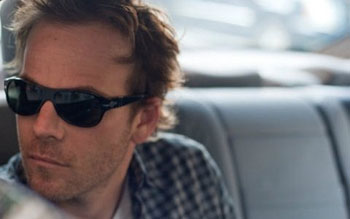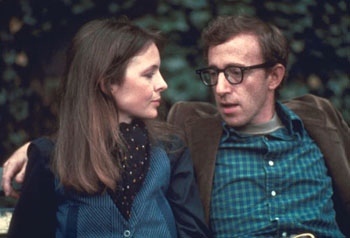 Back to selection
Back to selection
The Map

Alice Munro wrote a short story once called “Deep Holes,” and it’s as fitting a title as any when one considers her body of work. Munro has made a career out of writing the same short story over and over again, but because that story is shot through with an incredible amount of depth, with endless bottoms of nuance and complexity and minor shifts and adjustments each time, it constantly amazes. Jonathan Franzen (who himself rewrote his 2001 classic novel The Corrections as the even better Freedom), reviewing Munro’s 2004 collection Runaway, nailed it:
I like stories because it takes the best kind of talent to invent fresh characters and situations while telling the same story over and over. All fiction writers suffer from the condition of having nothing new to say, but story writers are the ones most abjectly prone to this condition. There is, again, no hiding. The craftiest old dogs, like Munro and William Trevor, don’t even try.
Here’s the story that Munro keeps telling: A bright, sexually avid girl grows up in rural Ontario without much money, her mother is sickly or dead, her father is a schoolteacher whose second wife is problematic, and the girl, as soon as she can, escapes from the hinterland by way of a scholarship or some decisive self-interested act. She marries young, moves to British Columbia, raises kids, and is far from blameless in the breakup of her marriage. She may have success as an actress or a writer or a TV personality; she has romantic adventures. When, inevitably, she returns to Ontario, she finds the landscape of her youth unsettlingly altered. Although she was the one who abandoned the place, it’s a great blow to her narcissism that she isn’t warmly welcomed back — that the world of her youth, with its older-fashioned manners and mores, now sits in judgment on the modern choices she has made. Simply by trying to survive as a whole and independent person, she has incurred painful losses and dislocations; she has caused harm.
And that’s pretty much it. That’s the little stream that’s been feeding Munro’s work for better than 50 years. The same elements recur and recur like Clare Quilty. What makes Munro’s growth as an artist so crisply and breathtakingly visible — throughout the “Selected Stories” and even more so in her three latest books — is precisely the familiarity of her materials. Look what she can do with nothing but her own small story; the more she returns to it, the more she finds.
Franzen then shares a quote from a Munro interview: “The complexity of things — the things within things — just seems to be endless. I mean nothing is easy, nothing is simple.”

- “Somewhere”
It was Munro who came to mind when I read an interesting article by Anne Thompson on her IndieWire blog recently. That article, entitled “Sofia Coppola Needs to Escape the Safety Zone,” implied that Somewhere, Coppola’s latest, fails due to its closeness in theme and execution to her most lauded work, Lost In Translation. “With Somewhere,” Thompson wrote, “[Coppola] retreated back to the insider world of Hollywood privilege she knows too well…Coppola has tread this track too many times. She needs to open up to other collaborators and voices. But she is not receptive…There’s something wrong here. Coppola needs to step into the outside world…Coppola isn’t alone. I’d argue that staying inside the Safety Zone (not listening to other voices) has stifled the considerable talents of big-budget filmmakers and micro-indies alike: James L. Brooks, John Sayles and Jim Jarmusch come to mind.”
With respect to Somewhere and Lost In Translation — and Coppola’s career in general — I believe that Thompson isn’t entirely wrong. Somewhere and Lost In Translation are both about movie stars living an anomie-laden existence in seclusion in a luxurious hotel who end up fostering paternal relationships with girls who they either have just met or do not see very often. They are both shot through with a carefully cultivated (one might say contrived) atmosphere of emptiness and isolation. They both present an “us against the world” perspective, where the two principal characters are the only ones imbued with a filmmaker-certified authenticity; their shared amusement of the absurd worlds they find themselves in is a key catalyst for their bonding. Both films are restrained in terms of theatrics, and both feature a dramatic climax that manages to pull off the bizarre feat of being both anticlimactic and, nevertheless, sentimental at the same time.
Regardless of how one feels about these two films, there can be no doubting that in theme, style, character and atmosphere they are almost indistinguishable, to the point of frustration. (And don’t forget that the film made in between, Marie Antoinette, was also about an isolated soul living in an enclave of luxury and privilege.) Watching the two films back to back, this writer was struck with just how pitch-perfectly the two match, to the point where the films’ atmosphere of anomie and disinterest in the world (and later, snarky mocking thereof) came across as contrived, cloying, and ultimately insipid. Somewhere inhabits the same territory as Lost In Translation and fails to add anything particularly new to the equation, a twist or new insight or formal approach. Yet something about Thompson’s argument rings false. She exhorts Coppola to find a new subject matter, to bring new artistic viewpoints into her work, but to play devil’s advocate for a moment, who’s to say Coppola may not one day make her father-and-daughter-against-the-world masterpiece? Perhaps she needs to mine this territory further. Indeed, like Alice Munro, haven’t some of the greatest filmmakers essentially made the same film over and over again? And if that is the case, what separates Coppola’s retreads from those of the greats? Why can the safety zone sometimes lead to work as fresh and original as Munro’s fiction, whereas sometimes it creates work that feels like a rehash, like Somewhere?
Obviously, cinema offers no shortage of Alice Munros. Alain Resnais’ four greatest films (Hiroshima, Mon Amour, Last Year At Marienbad, Muriel and Je T’Aime, Je T’Aime) are all about the same exact thing: the way that time affects our perception of memory, and vice versa. Gus Van Sant, who compiled the most exciting run in recent American cinema (Gerry through Paranoid Park), did it by exploring the same event (death) from four different angles, with (in the first three instances especially) absolutely identical formal approaches. Then, of course, there are two directors whose bodies of work remain as firmly within their safety zones as they are distant from one other: Alfred Hitchcock and Woody Allen. Hitchcock, who once supposedly said that he had made the same film over and over again his entire career, continually made films about a man who (often unwillingly) gets involved in a dangerous, mysterious situation that begins to slowly swallow him up. The plot mechanisms for many of the pictures were unerringly similar, but Hitchcock managed to slightly calibrate the best ones so as to refer to different self-reflexively cinematic themes (voyeurism in Rear Window and the role of the director in Vertigo are the two best examples). Regardless, his work was almost always of the highest grade.

- “Annie Hall”
Woody Allen’s uneven career provides a more interesting and helpful example for trying to understand the safety zone. Allen, who has made about a film a year for the last 42 years, is absolutely guilty of having made plenty of films on autopilot, writing and directing from the familiar comforts of his stock and trade, which since 1977’s Annie Hall has been a comedic drama about the complications and indiscretions that arise in contemporary bourgeois urban relationships. What’s interesting is that Allen has made some earth-shakingly good work in this safety zone, but also some utter garbage. His four greatest films — Annie Hall, Manhattan, Hannah and Her Sisters and Crimes and Misdemeanors — are all closely related, but they’re just as close to plenty of the poor work he’s made in his post-Husbands And Wives dry spell: Celebrity, Anything Else, Melinda and Melinda, the recent You Will Meet A Tall Dark Stranger. No one would suggest to Woody Allen that he “open up to other collaborators and voices,” but clearly it’s been almost 20 years since he’s worked consistently at a masterful level.
The obvious move here would be to compare a great Allen with a far lesser one; I think, however, that a more interesting case study is to compare two films that are about as close to one another as Lost In Translation and Somewhere, and see where Allen goes right. The two films with the most shared affinities in Allen’s body of work are Crimes and Misdemeanors and the best film of his latest period, Match Point. Despite being a retread of Crimes and Misdemeanors in many ways, Match Point was a career-resuscitating picture for Allen, his first great film since Deconstructing Harry, which came out seven years earlier. How did Allen make the safety zone work for him?
Your writer assumes that you, dear reader, are familiar with these seminal works from this seminal practitioner of the art. To be safe: Crimes and Misdemeanors revolves around two interlocking narratives, but the primary one concerns a wealthy, respected ophthalmologist who has been having an affair for quite some time. His mistress, who is aware that he is an embezzler in addition to being, naturally, an adulterer, threatens to go public with both truths when he tries to end their relationship. After some moral dilly-dallying, he asks his mob-connected brother to have someone “take care” of her. Once she’s been killed, he is overcome with guilt and almost confesses to the crime; yet as time passes all returns to normal. Match Point concerns a tennis pro at an upscale club in London who ends up befriending one of the members; after beginning to date that friend’s sister and taking a job at their father’s business operation, he attempts to sleep with the same friend’s girlfriend; he is ultimately rebuffed, but recommences the affair some time down the line, once the woman and his friend have broken up. He ends up marrying the wealthy sister, but is not in love with her, only the lifestyle she allows him to lead; in love with his mistress, he nevertheless ends up killing her after it becomes clear she is going to reveal all to his wife. Once she is killed he is overcome with guilt; yet as time passes all returns to normal.
Clearly, the narratives of both films share enormous affinities — both pictures are about men who have to choose between their privileged lifestyles and their amorous excesses, between owning up to their indiscretions and preserving their positions of wealth and power. In each case, they find the consequences of taking the ethical action too difficult to bear, and choose instead to allow their indiscretions to lead to far greater indiscretions; yet as time passes they find that they are able to live with what they’ve done. Yet Match Point, when released, was not decried as a rip-off of its predecessor. “Comparisons to Crimes and Misdemeanors are inevitable, since the themes and some elements of plot are similar,” A.O Scott wrote in the New York Times, “but the philosophical baggage in Match Point is more tightly and discreetly packed. There are few occasions for speech-making, and none of the desperate, self-conscious one-liners that have become, in Mr. Allen’s recent movies, more tics than shtick. Nor is there an obvious surrogate for the director among the youthful, mostly British and altogether splendid cast. If you walked in after the opening titles, it might take you a while to guess who made this picture. After a while you would, of course.”
Scott’s points are well taken. If we can define the “Safety Zone” as a realm of thematic and formal specificity, then yes, both films are firmly ensconced within it; but something is different. Woody Allen did not leave his safety zone to make Match Point; rather, he provided a slight alteration to how he approached his safety zone. He set the film in London, his first film not set in New York since 1996’s Everyone Says I Love You. His characters are not Americans, for the first time since 1975’s Love and Death, which is about, ahem, Russians. As Scott notes, the speeches on the indifference of the universe and the need to live one’s life according to a moral code, which make for some of the greatest scenes in Crimes and Misdemeanors, are absent. In fact, there are barely any scenes of the characters commenting on the mess they’re in, in any significant detail; and there are certainly no scenes of characters providing real insight into not just their own lives, but the nature of life itself, as is so often the case in Allen’s great films. These changes, minor in the grand scheme of the picture, nevertheless allow for enough of a recalibration of the film’s feel to engender a new, different perspective on the topics discussed therein. So to the story itself: how do you tell the same story twice without it feeling tired or contrived?
Allen’s answer is to complicate things, to drive deeper. Crimes and Misdemeanors leaves little question as to the inevitability of Judah’s (the ophthalmologist) decision to take some form of hostile action toward his mistress. We see some of their intimate moments, glimpsed in flashback, but the picture of their relationship presented is overwhelmingly one of hostility and tension; his mistress, played by Anjelica Huston, is falling apart at the seams. Judah’s relationship with his wife seems strong — he may have had an extramarital affair, but he clearly harbors significant affection for his wife, regardless. In Match Point, the sexual chemistry between Chris, our social climber, and Nola, his mistress, begins at a boiling heat and doesn’t begin to go south until much later in the picture. We glimpse the full range of their desire and bond with one another. It may be a bond that is supported in no small part by eroticism, but it’s a hell of a lot more than what you can say for Chris’ relationship with his wife: the two have sex by appointment in order to get her pregnant, and Chris displays little genuine affection for her. Plain and simple, he is interested in the social status she provides, nothing more. What this leads to is far more speculation as to whether Chris will leave his wife or his mistress; the decision is not a foregone conclusion, as it clearly is in Crimes and Misdemeanors. The fact that it isn’t a foregone conclusion means that Chris’ decision to kill Nola is more resonant than Judah’s — the first time I saw Match Point, I was convinced Chris was going to kill his wife, not Nola.
Chris’ decision is a more resounding exemplar of the adulterer’s preference for the comfortable life over a quest for moral absolution. Judah is faced not only with the prospect of losing his wife, but also of going to prison for his embezzling; Chris has committed no crime. He’ll lose his marriage and his job, yes, but he can probably go to another firm and put his life back together. Yet not only does he choose the drastic option of killing Nola, he kills her himself, something Judah would certainly be incapable of. Judah’s decision was more centered on saving his own skin and avoiding prison; Chris’ decision is centered around a materialistic fetishization of his newly privileged life, a life he will stop at no length to preserve. Match Point, ultimately, portrays a character with a deeper and baser abnegation of the role of morality in the universe than Crimes and Misdemeanors. It is the same film through a glass, darkly. In being this, the film not only maintains its own merit, it provides interest as a commentary on Crimes and Misdemeanors, a work of criticism of the previous film, much as Allen has explained that Crimes and Misdemeanors (by way of its ending) was meant to be a critique of the ending of Hannah and Her Sisters. In Crimes and Misdemeanors, an adulterer commits murder because he thinks he has to. In Match Point, an adulterer commits murder by freely choosing to. 16 years after Crimes and Misdemeanors, Allen’s nihilistic worldview drove itself one notch deeper, one notch lower, one notch closer to the moral bankruptcy so often at the root of his stories. The safety zone was the same, but the approach was different.
It is, ultimately, reductive to label a filmmaker’s home base as the “Safety Zone”; the truth is that individualistic artists have complex relations with their typical subject matter and formal approach. Sometimes they go through the motions in a dull retread of previous works; sometimes they build off of those previous works and create even richer, deeper portraits of territories they have already mapped thoroughly. Better, perhaps, to think of what Thompson refers to as the “Safety Zone” as a map of an artist’s general field of interest — the territory’s surface has been charted and is easily recognizable, but it still contains uncharted depths that could be explored for decades. The flaw in Sofia Coppola’s latest film is that there is neither a significantly different approach nor a further depth charted than what she’s uncovered in her previous work; she’s not showing us any part of the map we haven’t seen already. While Somewhere is not exactly Lost In Translation 2 — it features slower pacing, longer takes, less expository dialogue and less narrative in general — it is a film that (in no small part due to the attributes listed here) lives or dies by affect; and its affect feels, well, affected, almost as if Coppola is striving to recreate the atmosphere of her most lauded work. But give her time and she may get there yet. And Ms. Coppola, if by any chance you find yourself coming across this article: while I’m in no position to suggest to you how to manage your career, you might like what you find if you check out Too Much Happiness, the latest short story collection from my favorite perennial Nobel candidate. Every story is more or less the same, and every story follows the same exact plot machinations, and unfailingly, a few pages from the end, every single one brought me to tears.

Zachary Wigon is a New York-based screenwriter and film critic. Since graduating from NYU’s film school in 2008, he has contributed writing on film to The L Magazine, The Onion A/V Club, NYLON magazine and The House Next Door, amongst other outlets. His first feature screenplay, For Your Entertainment, is currently in pre-production.


